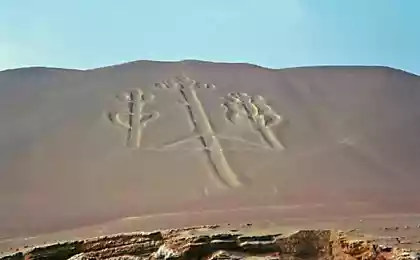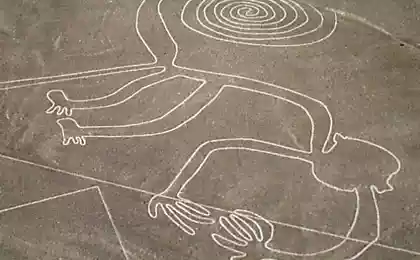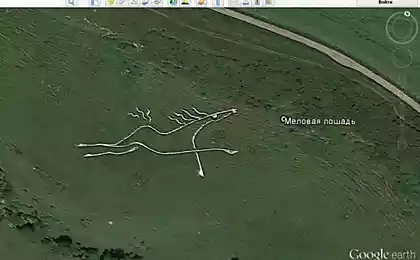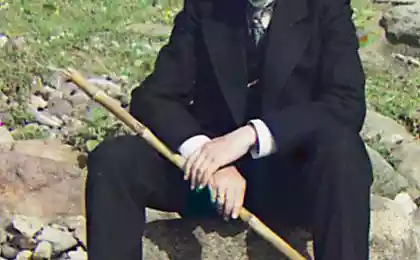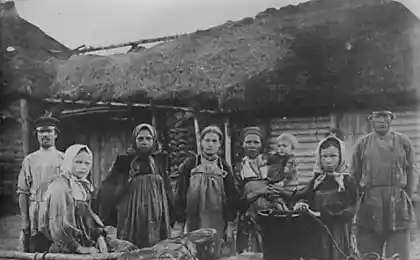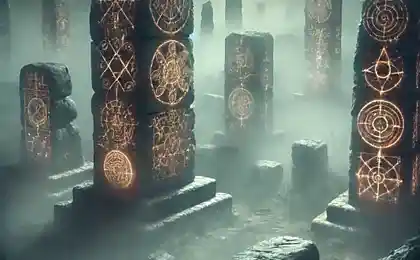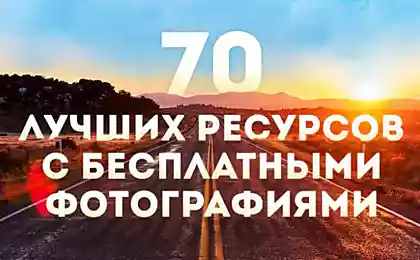221
10 most mysterious huge images from around the world
Ancient secrets
Ancient cultures have created enigmatic geoglyphs all over the planet – huge images carved into the landscape, often only visible from the air. Since these paintings were painted long before air travel became a reality, the existence of geoglyphs made one wonder about their origin. Who were these drawings intended for? Who created them? For what purpose?
We offer readers a look at the 10 largest and most mysterious geoglyphs that can be viewed from the air.
Nazca Lines Perhaps the most famous geoglyph, the Nazca Lines, can be seen in the Nazca Desert in southern Peru, and it is listed as a UNESCO World Heritage Site. Scientists believe that the lines were created between about 200 BC and 500 AD.
The geoglyph consists of hundreds of figures, many of which depict animals such as hummingbirds (pictured), sharks, monkeys, spiders, dolphins, lizards and even a supposed "cosmonaut."
Today, the purpose and meaning of the Nazca Lines remains a mystery, although a number of theories have been put forward. Some speculate that they were intended for observation by the gods of the Nazca culture, others believe that they were created for astronomical purposes. There are even people who believe that the lines were made to communicate with extraterrestrial visitors.
Marrie's man.
This spectacular geoglyph in a sparsely populated region of Australia depicts a native hunting birds or kangaroos with a bat. The Murray Man is the second largest geoglyph in the world. It was discovered only in 1998, and scientists have determined that the drawing was created in our era. However, its origin, meaning and purpose remain a mystery.
At the time of the opening, only one trail served as the entrance to the place, and another was the exit, and no footprints or tires of the car were found. No one has claimed responsibility for the creation of the man.
Old man's work
A recent aerial survey revealed a vast geoglyph stretching across Saudi Arabia, Syria and Jordan, among other things depicting many wheels. The geoglyph has been called “The Works of an Old Man” and is believed to be several thousand years old, making it much older than the famous Nazca Lines.
The two main questions – when and why – were not answered.
Uffington White Horse
This highly stylized prehistoric image on a hill called "Uffington White Horse" is located in the English county of Oxfordshire. Scientists suggest that the drawing, created using deep trenches filled with crumbled white chalk, was originally created in the Bronze Age between 1200 and 800 BC.
Although this geoglyph is thought to have a horse painted on it, there are people who claim it is more like a large cat. This brings even more mystery to the geoglyph, as there are no big cats in the UK.
Andean chandelier This amazing geoglyph can be seen on the northern side of the Paracas Peninsula in Peru, and is thought to have been created around 200 BC. Its meaning and purpose are unknown, but controversial theories abound.
Local legend says that the geoglyph is an image of a lightning-throwing device of the god Viracocha, who was worshipped throughout South America. But others speculate that it was created as a sign for sailors or is even a symbolic image of a hallucinogenic plant called "common dope."
Blythe figures These amazing anthropomorphic geoglyphs can be found near the California town of Blythe in the Colorado desert. The drawings, created by simply removing a layer of darker stones to display the white deposits beneath them, survived a millennium thanks to the aridity of the region.
It is believed that the geoglyph was created by the Mojave Indians around 1000 AD, and the figures were not discovered until 1932, when a pilot flying over them accidentally looked down and saw the lines.
Amazonian geoglyphs In the 1970s, in the Amazon basin, due to deforestation, an extensive network of mysterious ancient geoglyphs was revealed, presumably created by pre-Columbian civilization. If true, the geoglyph could completely rewrite the history of ancient cultures and population density in prehistoric South America.
The Giant of Cerne-Ebbas
Unlike many other geoglyphs mentioned in our list, the Giant of Cerne-Ebbas, located near the village of Cerne-Ebbas in England, is hardly a prehistoric creation. The earliest records of its existence date back only to the 17th century. But even with this in mind, the purpose of creation and the significance of the geoglyph remains an insoluble mystery.
Geoglyph is famous for depicting a giant man with an erect penis. It has been called Britain’s most famous phallus and has become popular with tourists.
Russian geoglyph This mysterious drawing depicting a deer or elk was discovered on the slopes of the Zyuratkul mountain range in the Chelyabinsk region of Russia, and this geoglyph may be the oldest discovered so far. The stone tools scattered around the drawing date from the Neolithic or Chalcolithic period and date from between 4000 and 2000 BC. Thus, it is possible that the geoglyph was created by an ancient megalithic culture, scientists say.
Giant from the Atacama Desert The Giant image from the Atacama Desert, located at an altitude of 119 meters, is the largest prehistoric anthropomorphic geoglyph in the world. It is located in the Chilean Atacama Desert and is believed to be an image of the local god they created between 1000 and 1400 CE. However, the figure became the object of crazy theories about its meaning, including speculation about extraterrestrial visitors.
Source: facepla.net
